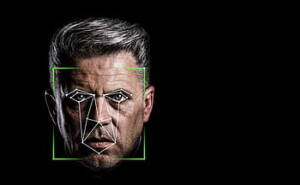Facial Recognition

The ability to recognize faces is controlled by the temporal lobe of the brain. There are neurons in the temporal lobe that respond to particular features of the face, which help recognize and identify a person. This natural ability to be able to recognize someone is useful for basic everyday use but when it comes to a forensic case it is unwise to go based off of just eyewitness accounts. This is when technology comes into play.
Identix® a company based in Minnesota is just one developer of facial recognition software. Facial recognition software is based on the ability of the software to recognize a face and then measure the different features of that face. For example, FaceIt® is facial recognition software that can pick someone’s face out of a crowd, extract that face from the scene and then compare it to a database of stored images. In order for this software to work, the program must be able to recognize the difference between the background of the image and the face.
Every person’s face has many different peaks and valleys that make up facial features. These peaks and valleys are called landmarks. FaceIt® defines the landmarks as nodal points. The human face has about 80 nodal points. Some of the nodal points that FaceIt® measures are:
• Distance between the eyes
• Width of the nose
• Depth of the eye sockets
• The shape of the cheekbones
• The length of the jaw line
The nodal points are measured creating a faceprint which is a numerical code that represents the face in the data base.
In past years 2D imaging was what facial recognition relied on. The problem with this was that in order for there to be any chance of an accurate match, the image that was captured had to be of a face that was looking directly at the camera, the facial expression had to be close to identical and there was very little room for variance in lighting. Any change between the image that was captured and the image that was already in the database, caused the system to not be effective and images couldn’t be matched which lead to a high rate of failure. 3D facial recognition has started to fix the problems that 2D facial recognition had. For example, 3D imaging is able to recognize a face even if the angle is different, as long as the angle it less than or equal to 90 degrees which is a face in profile.
Back to Forensic Investigation
Back to Crime Library
|
|
|

